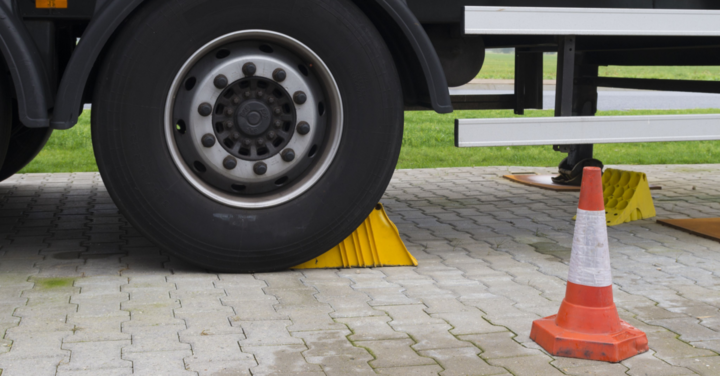Every year, the trucking industry is responsible for the majority of domestic freight transportation. In 2020, trucks transported more than 10 billion tons of freight, representing 72.5% of all domestic cargo, according to the American Trucking Associations. 3.36 million drivers contributed $1.2 trillion to U.S. GDP.
According to the National Highway Traffic Safety Association, heavy duty trucks are also responsible for over 500,000 crashes per year,As vital as linehaul trucking is to the national economy, it is equally important to move freight safely.
There are tips that CDL drivers can follow to protect themselves and others from harm. In this article, we’ll discuss the importance of linehaul driver safety, highlight some of the federal regulations to know about, and provide some truck driving safety tips to keep everyone secure on a haul.
Why the Trucking Industry Needs to Focus on Linehaul Trucker Safety
Trucking is a challenging and dangerous occupationDistracted driving, speeding, driver fatigue, weather, overloading, maintenance issues, poor lighting, and weather are all hazards that can cause potential accidents.
On top of that, being a truck driver can be very isolating work compared to other occupations. Drivers operate alone on the road for hundreds or thousands of miles, increasing the odds of a safety issue arising, and potentially, the amount of time it takes for help to arrive.
According to the Bureau of Labor Statistics’ Census of Fatal Occupational Injuries survey, transportation and materials moving occupations accounted for 47.4% of all workplace fatalities in 2020. During that same year, 766 truckers died on the job.
Safety concerns extend outside of the cab, too. Data from the 2020 Insurance Institute for Highway Safety shows that 4,014 people were killed in a trucking accident. 68% of those fatalities were passenger vehicle occupants, and another 16% were pedestrians.
Nobody wants to be in an accident. Fortunately, there are steps that drivers, and their employers can take to prevent these occurrences.
The Truck Driver Safety Rules and Regulations to Know
CDL driver safety is a win-win. Truckers, and the people they encounter on the road, need to be protected for their own well-being. But trucker safety also impacts your company’s reputation and financial stability.
There are federal regulations, as well as steps that companies can take to ensure that linehaul drivers operate their trucks safely. We’ll cover each one below.
Hours of Service
Everybody gets tired after a long day on the road, and linehaul truckers are no exception. HOS regulations exist to prevent driver fatigue, and help truckers stay alert and focused on road conditions.
Hours of service, or HOS regulations, are federal limits on how many hours a driver may work each day. HOS regulations are set by the Federal Motor Carrier Safety Administration, or FMCSA. The FMCSA states that “property-carrying drivers” (aka tractor-trailer operators) are allowed to be on duty for 14 hours per day. But it isn’t as simple as “set a timer, drive for the time allotted.” There are other stipulations within the 14 hour requirement.
Per FMCSA rules, truckers aren’t allowed to drive for more than 11 hours during a 14 hour shift, and are only permitted to drive for 11 consecutive hours. Drivers are mandated to take a 30 minute break after eight hours of continuous driving.
To ensure adequate rest, drivers are also required to be off-duty for 10 consecutive hours before starting a shift.
Finally, truckers are required to follow what’s known as the 60/70 hour limit. This is an FMCSA requirement that prohibits drivers from working more than 60 hours every seven days, or 70 hours every eight days.
For example, suppose a truck driver, has been on duty for 14 hour shifts, four days in a row. In that situation, the driver would have worked 56 hours, and wouldn’t be allowed to work more than four hours the next day. Under those circumstances, they could resume driving on day seven, and work for ten more hours.
There is one way to reset the clock. If a trucker is nearing their driving limit, the FMCSA permits what the industry calls a 34-hour reset. After the reset, the driver can restart their shift.
ELDs
By now, you may be wondering how drivers and companies track the number of hours driven. The answer is that they use an electronic logging device, or ELD.
An ELD is a piece of hardware that gets installed inside the cab of a truck. By pulling data directly from a vehicle’s engine, ELDs automatically record a truck’s location, speed, mileage, fuel efficiency, as well as the driver’s hours of service.
In December 2019, the FMCSA made ELDs mandatory for all commercial drivers, replacing the paper records that drivers used to record manually. Anyone who is required to keep records of duty must now have an electronic logging device that automatically tracks hours for them.
A Comprehensive List of Truck Driving Safety Tips
What if you’re thinking about getting behind the wheel yourself? Perhaps you’ve been reading the AMX blog for a little while, and you’ve decided to traverse the open road as a linehaul driver. What do you need to do to stay safe?
If that’s your situation, we’ve got you covered. Here are seven trucker safety tips you can take to ensure you, and the people you encounter are protected:
- Plan Your Routes – Anything can happen on the road, and there’s a lot that could go wrong. A storm, a traffic accident, or even construction could leave you stuck. The solution is to plan the route ahead of time, including a backup option if an emergency arises. Route optimization software can help come up with a plan B (or even a plan C).
- Keep Up With Vehicle Maintenance – Vehicle safety is fundamental to truck driver safety. The last thing you want is to have a breakdown on the road. . linehaul drivers can ward off that scenario by maintaining a regular maintenance schedule, and by getting their truck inspected before and after long trips. In particular, drivers will want to ensure that their oil and coolant levels are adequate, tires are properly inflated, and that the brake pads are in good condition.
- Obey the Speed Limit – Hey, we get it. When you’re on the road, you’re probably eager to get a load delivered and get home (or on to the next job). But speed limits exist for a reason. That reason is to keep you, and everybody else safe Following the speed limit is even more important in work zones, where people might be moving about, or over bridges which can freeze under certain weather conditions.
- Stay Alert – It’s a good rule of thumb to practice defensive driving in all circumstances, but especially behind the wheel of an eighteen-wheeler. As a driver, you should always anticipate hazardous situations or changes in road conditions, and know how to properly respond to them. This means avoiding cell phone use, maintaining proper distance behind other vehicles, using your turn signal, and watching out for blind spots. And while we’re on the topic, please wear your seatbelt any time you’re on the road.
- Take Care of Yourself – Truckers who aren’t feeling well, or who haven’t attended to their personal needs are less safe behind the wheel. So be sure to get adequate nutrition and hydration, and to be sufficiently rested in preparation for a run. Once on the road, make sure to take breaks when needed. Stretching, and exercise are important to a healthy body and mind and can help keep you alert. Try to avoid excessive fast food or sugary snacks, as they tend to make people sleepy – not what you want on a haul!
- Avoid Drugs and Alcohol – Hopefully this one goes without saying. Never get behind the wheel when you are under the influence of drugs or alcohol. These substances impair judgment and slow reaction time. The National Highway Traffic Safety Administration estimates that 10,000 lives are lost in drunk driving accidents per year. But even if you don’t contribute to that statistic, driving under the influence could still cost you your job, result in fines, and may even land you in jail.
- Be Careful in Inclement Weather – We’re rounding the bend of 2022, and that means colder weather is coming. If you plan to drive in winter conditions, there are additional steps you’ll want to take to maintain your safety. Double check that your equipment is in good working order, especially your heater, defroster, lights, and brakes. When on a haul, minimize lane changes and make sure to leave plenty of space between your rig and other cars. And above all, use your common sense. Slow down, avoid traffic when possible, be extra vigilant at night, and if need be, pull over to wait out a storm. You can’t help anyone if you catch hypothermia.
At AMX Logistics, CDL driver safety is our first priority. If you are looking for a responsible logistics provider, we would love to hear from you. Shippers and drivers who work with AMX Logistics can rest easy knowing that we’ll never prioritize a load before the health and wellbeing of our drivers. Start a conversation with AMX Logistics today, to learn more about our commitment to quality service and safe delivery.


